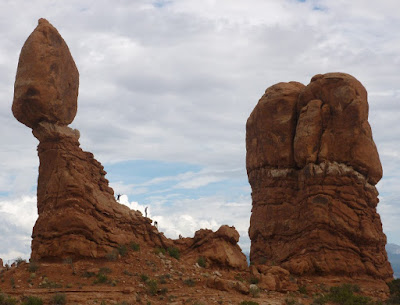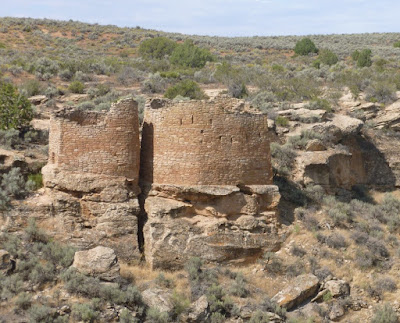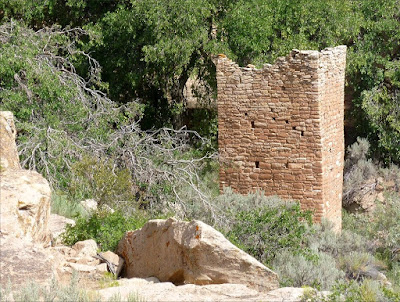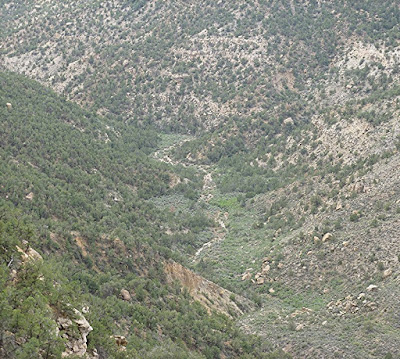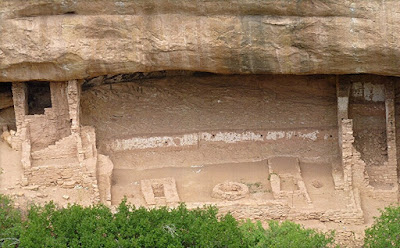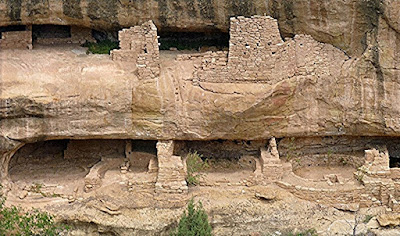As I mentioned in Part 1, the most famous site in Mesa Verde National Park is arguably Cliff Palace, situated in an alcove above Cliff Canyon. Cliff Palace can only be visited by a guided tour, for which there is a charge separate from that for entering the park. Fortunately, the tours start every half hour, and only cost three dollars. The tour involves quite a bit of walking, stair climbing, and even ladder climbing. Entering the alcove requires walking down a flight of a dozen or so regularly spaced metal stairs, followed by rock steps having irregular vertical distances between one and the next. Thankfully, metal railings run along most of the rock stairway, providing a useful handhold. The stairway gives way to a relatively level paved path, but entering the pueblo itself requires ascending a wooden ladder, made in the same style as those of the old inhabitants, but thankfully of much newer wood. The walkways within the site are easy, involving only an occasional set of rock steps.
Here is one of the multistory buildings in Cliff Palace. The wooden beams, whose ends protrude from the walls, divide one level from the next.
This shot shows a partial panorama of the site, with our tour guide in the foreground.
This kiva, like one I saw at Chimney Rock, includes a central circle where a fire was kept, an air ventilation hole, a stone baffle to keep the incoming air from blowing directly on the fire, and several stone structures along the wall, which supported the wooden posts that held up the roof.
Another partial panoramic shot shows another kiva and a round tower, among other buildings. Some of the walls extend up to the roof of the alcove.
This is another multistory building, which appears to incorporate a large chunk of rock right where it stood.
This trapezoidal multistory building is located above the kiva shown above.
To finish the tour and leave Cliff Palace, we had to climb up a combination of rock steps and four more wooden ladders, ranging from 8 to 10 feet in height. The total vertical distance between the walkway within the site and the parking lot above is about 100 feet.
After Cliff Palace, I found some other places in Mesa Verde that seemed worthy of a brief visit. Those will be shown in Part 3.













